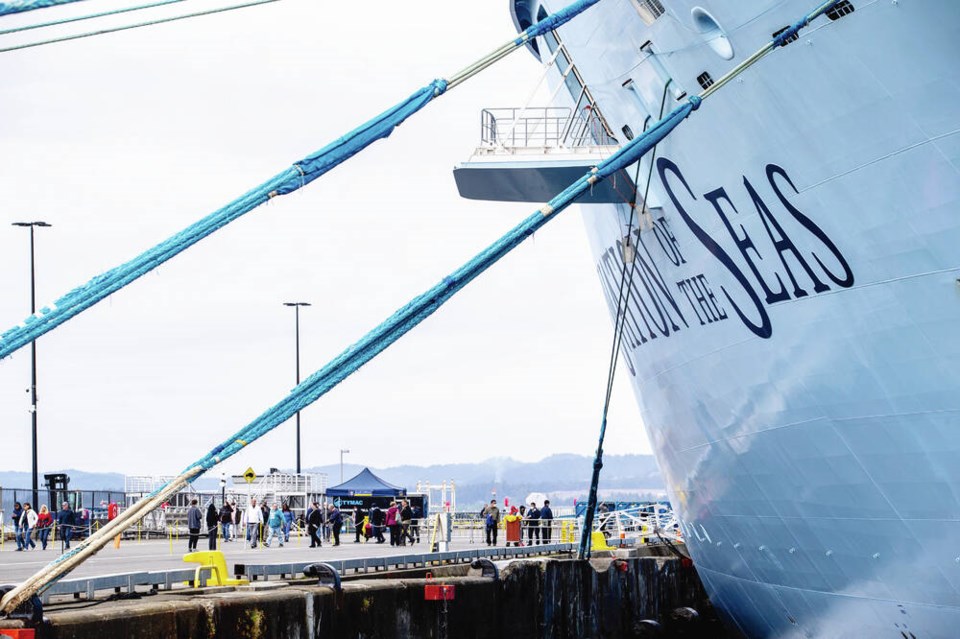Cruise ships could face stiffer fees for dumping high-risk waste in Victoria starting in 2024 if the Capital Regional District environmental services committee adopts recommendations in a new report.
The report, to be considered by the committee today, recommends the CRD increase the Hartland Landfill tipping fee for international high-risk cruise-ship waste to $500 per tonne starting in 2024.
Currently all cruise-ship waste, whether high- or low-risk, is subject to a controlled-waste tipping fee of $157 per tonne.
According to the CRD report, Canada Border Services Agency staff have the discretion of designating cruise-ship waste either high-risk or low-risk depending on factors like composition or origin, but any waste not inspected is automatically deemed to be high-risk.
High-risk waste received at Hartland is subject to deep burial in controlled waste trenches and covered with a minimum of one metre of low-permeability clay, while low-risk waste is managed like other household garbage.
“A lot of it ends up being high-risk waste, and it has to be dealt with in the same way as asbestos,” said Esquimalt Mayor Barb Desjardins, chair of the environmental services committee. “So it requires a lot more work than just average waste.”
Desjardins said she expects the committee to approve the recommendation, as the cost of dealing with high-risk waste is considerable.
“It’s a complex problem in that it’s not a lot of waste in the overall picture … but it is regulated by the federal government,” she said, noting high-risk cruise-ship waste amounts to less than one per cent of all waste at Hartland.
The report noted the cruise industry already recycles much of its waste — about 85 per cent — but CRD staff believe the increased cost of using Hartland Landfill could prompt the industry to find new and better ways to recycle and divert waste or find new options for disposal.
In 2019, the last full cruise season, Hartland Landfill received approximately 2,100 tonnes of cruise-ship waste. Of that, 600 tonnes was deemed high-risk.
The CRD report estimates that if the $500 per tonne fee is adopted, the increase in disposal costs for the cruise industry in an average year would be $200,000.
Ian Robertson, chief executive of the Greater Victoria Harbour Authority, said if the fee increase is approved, it shouldn’t go into effect until the 2024 season. “The reason for that is the cruise lines have pretty much put pricing to bed for the 2023 season, so to pass on another increase at this time, I think, would seem to be kind of confrontational.”
Desjardins said the 2024 date makes sense and will allow the cruise-ship industry to make adjustments for the increased fee.
• To comment on this article, write a letter to the editor: [email protected]

